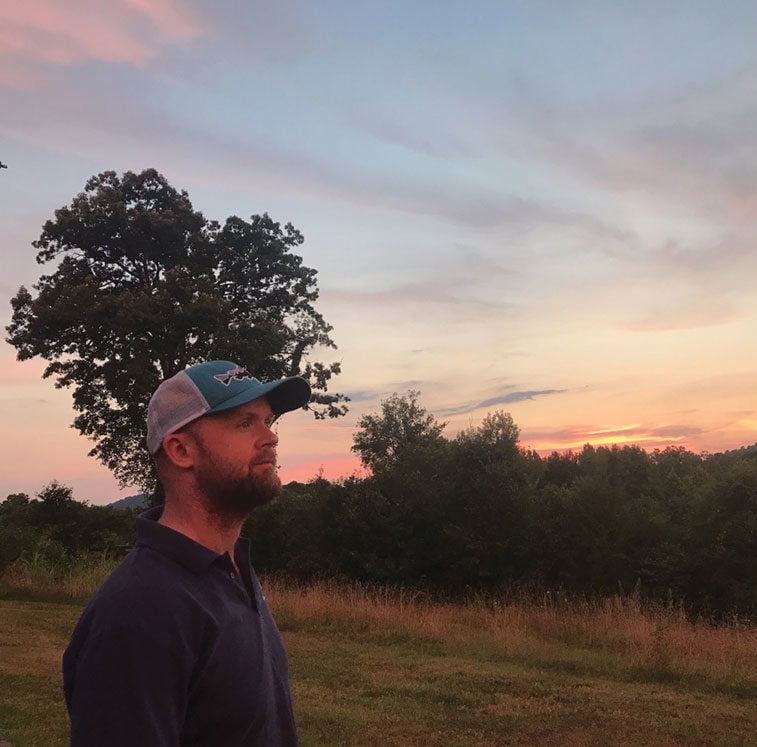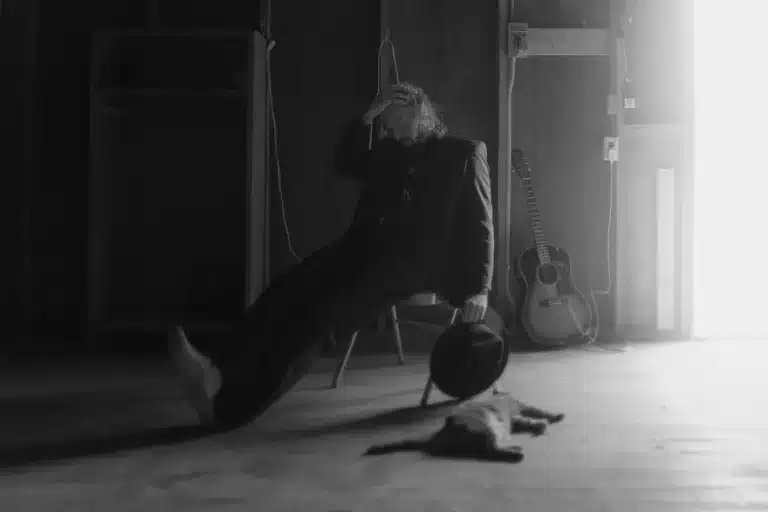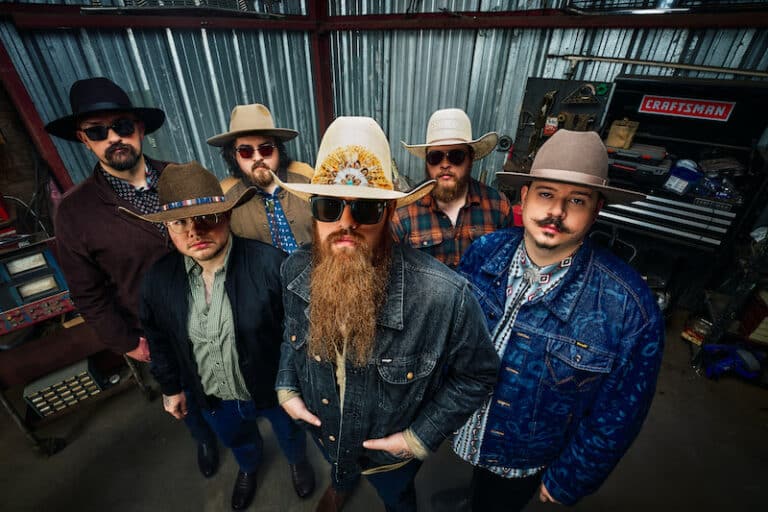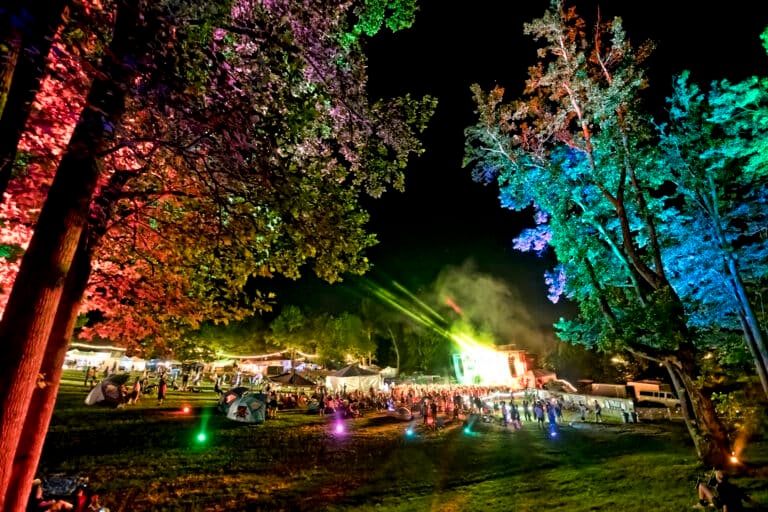The Tennessee writer’s new novel addresses systemic racism in the South. He talked to BRO about the book, the importance of recharging outside, and his favorite spots in his hometown of Knoxville.
Charles Dodd White is having a moment. The Knoxville writer’s new novel, How Fire Runs, addresses white supremacy in East Tennessee and has been called, “a novel that transcends region to become raw commentary on this volatile moment in America.” His new essay collection, A Year Without Months, forthcoming next year, includes essays on Southern culture and politics that have generated both admiration and derision—surely the mark of a great writer doing important work.
We’ve been friends for years. And while I know Charles as a writer and thinker, I know him even better as an avid outdoorsman. We’ve paddled and backpacked all over the Southeast, and have probably spent as much time talking trails as we have books. We sat down to talk about the pleasures of living and playing in the Southern Appalachians.
BRO: How Fire Runs is frightening and relevant. It’s also an Okra Pick by the Southern Independent Booksellers Association.
Charles: A lot of writers tell you to write what you know. I’ve always preferred the idea of writing about what bothers you. That’s what I tried to do with this novel. It’s a terrible truth that some of the most beautiful parts of the country are still struggling to wake up from the nightmare of violent racism.
BRO: I imagine there are moments when you have to step back. What do you get from the outdoors? Energy? Renewal?
CDW: Any time outside turns pretty quickly into an act of meditation. I think of Thoreau’s essay, “Walking.” He talks about the need to go off the roadways and well-trod trails and let the hike become intuitive. Just blaze away. I find that whenever I hike or paddle I’m able to simultaneously perceive and contemplate, which is really incredible when you think about it. It makes me realize that a physical life and a mental one aren’t at odds.
BRO: In an essay for The Bitter Southerner, you write that, “My desire to experience wilderness on its own terms has entwined with my love for reading about it.” You mention Thoreau, Emerson, and Abbey. Are there contemporary nature writers you read?
CDW: You’ve got to put Helen MacDonald at the absolute top of any nature writing list. H Is for Hawk was a gorgeous look at the relationship between animals and their humans. John McPhee is another writer who has one of those omnivorous curiosities that is a sheer pleasure to behold. Of course, it’s impossible not to care about the outdoors without acknowledging a profound debt to Wendell Berry.
BRO: Though your work transcends place, it’s grounded in the Southern Appalachians. How does your writing life inform your outdoor life, and vice-versa?
CDW: I grew up hunting and fishing in middle Georgia, but even as a kid the idea of the mountains had a particular hold on me, so when I moved to the North Carolina mountains at 18, I wanted to get outside as much as possible. Hiking trails and fishing Appalachian streams is something that gets into your head in a much different way than the piney woods and slower water of the Deep South does. It feels more secluded and I think it rewards curiosity in a different way.
The landscape definitely has an effect on how I write about the place. There’s more of a tension between the geography and the people that I’ve found in other places. This might not be a feeling exclusive to Appalachia, but the mystery of it seems somehow sharper here.
BRO: Give us some favorite hiking spots in the Blue Ridge.
Charles: The Roan Highlands aren’t a secret to those who’ve done the Appalachian Trail. Starting at Carvers Gap and ending up on 19E just outside of Roan Mountain, Tennessee, that’s a beautiful 15 or 16 miles of just about anything you could ask for. You have balds, peaks, and horizon views of some of the most iconic ranges in the Southeast.
BRO: A favorite place to paddle?
CDW: I like whitewater paddling a lot, but the older I get, the more I enjoy a canoe trip that gives a superior view of wildlife. My current preferred float is the tail of the French Broad as it converges with the Holston River to form the beginning of the Tennessee in Knoxville. In the course of a single day I saw dozens of cormorants, a pair of eagles, maybe seven or eight ospreys, and some wading deer.
BRO: All right, so we’ve hiked Roan Mountain and paddled the Holston. What about after—a favorite brewery?
CDW: I’m partial to a couple of places here in Knoxville. One is Last Days of Autumn, which is an unassuming spot on Magnolia Avenue not far from the hipster Fourth and Gill neighborhood. A functional outdoor space that has a great selection of American style brews. The other is Schulzbrau, which is a beer garden in the Happy Holler area that has liters of German beers they brew in house.
BRO: A favorite restaurant?
CDW: I’m pretty happy with a good taco place that has a full bar to back it up. You can’t go wrong with SoKnox Taco. I recommend the flat iron burrito with shrimp and a side of the fresh guacamole.
BRO: What’s next, both the literary and outdoor world?
CDW: Before COVID-19, I was planning on a hiking trip in Hokkaido, Japan, but that’s been delayed for obvious reasons. I’d still love to find a way to make that work in the next couple of years. I’m beginning work on a new novel set in East Tennessee about a woman who takes justice into her own hands with disastrous results and follows the consequences of that over three decades. The working title isThe Undeserved.
Mark Powell is a professor at Appalachian State University and the author of six novels.
Cover photo: White’s latest novel, How Fire Runs, was released last fall. Photo courtesy of Charles Dodd White







